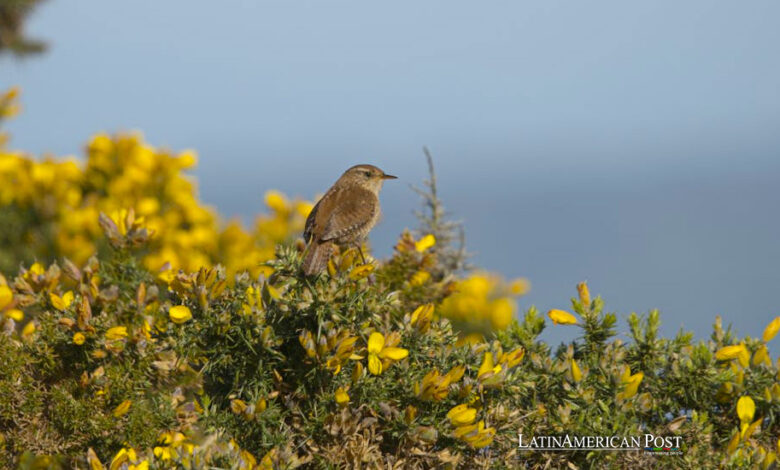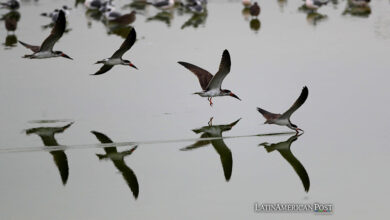Winged Wonders: A Birdwatching Odyssey in Latin America

Embark on a birdwatching journey across Latin America, where the symphony of bird calls beckons from cloud forests to deserts. This continent’s rich tapestry of ecosystems offers an unparalleled avian paradise, promising every bird enthusiast a glimpse into the heart of nature’s marvels.
Latin America, a realm where the vibrancy of life is matched only by the diversity of its landscapes, offers a sanctuary for the avian world that is as captivating as it is varied. From the mist-enshrouded heights of the Andes to the dense green embrace of the Amazon Rainforest, each unique habitat hosts an array of bird species that enchant and intrigue. This feature delves into the heart of Latin America’s birdwatching sanctuaries, exploring the myriad environments and the feathered inhabitants that make this region a must-visit for bird enthusiasts around the globe.
The Misty Cloud Forests of Ecuador and Colombia
In the cloud-kissed highlands of the Andes Mountains, Ecuador, and Colombia’s cloud forests offer a realm of perpetual green twilight. Here, endemic species flourish, untouched by the world beyond. The vibrancy of the Andean Cock-of-the-rock and the haunting call of the Spectacled Owl become the essence of these forests, drawing birdwatchers into a world that feels both ancient and altogether new.
Must-See Species:
Andean Cock-of-the-Rock: A blaze of red amidst the green, its appearance is as dramatic as its mating dance.
Spectacled Owl: Its piercing gaze, framed by feathered spectacles, makes a lasting impression on all who encounter it.
Toucan Barbet: Its vivid colors and distinctive call symbolize the cloud forests’ biodiversity.
Best Time to Visit: The drier months from December to April offer clearer skies and easier access to these often remote areas.
Brazil’s Pantanal: A Wetland Wonderland
The Pantanal, sprawling across Brazil, is a testament to the abundant life that thrives in wetland ecosystems. The landscape is a dynamic mosaic of water and land, home to the Hyacinth Macaw and the Jabiru Stork. In this vast, open space, birds exist and abound in numbers that dazzle the senses.
Must-See Species:
Hyacinth Macaw: The largest flying parrot species, its cobalt feathers reflect the Pantanal skies.
Jabiru Stork: The emblem of the Pantanal, its stark white and black plumage, stands out against the verdant landscape.
Hoatzin: A bird of prehistoric appearance, its unique beauty captures the essence of the Pantanal’s ancient allure.
Best Time to Visit: The dry season from May to September reveals the Pantanal’s full glory as water recedes and wildlife congregates around lingering pools.
Chile’s Atacama Desert: An Arid Avian Haven
Life finds a way to assert itself in the stark, seemingly barren landscapes of the Atacama Desert. The Andean Flamingo, painting pink streaks across salt flats, and the elusive Atacama Tapaculo showcase the adaptability of nature, turning what might appear barren into a stage for some of life’s most remarkable plays.
Must-See Species:
Andean Flamingo: Its elegance is a striking contrast to the rugged desert backdrop.
Atacama Tapaculo: A testament to the desert’s hidden life, thriving in its silence.
Andean Condor: The sight of it soaring above the desert sands reminds us of the wild freedom that defines this landscape.
Best Time to Visit: Spring and autumn offer a reprieve from the extreme temperatures, making these seasons ideal for exploration.
Ecuador’s Galapagos Islands: Darwin’s Avian Laboratory
The Galapagos Islands, where Darwin’s theories took flight, remain a living showcase of evolution. Here, the Blue-footed Booby’s dance and the Waved Albatross’s effortless glide over the waves offer glimpses into the adaptability and diversity of avian life.
Must-See Species:
Blue-footed Booby: Known for its quirky mating dance and striking blue feet.
Waved Albatross: Witnessing its wingspan in motion is to watch nature’s grace in action.
Darwin’s Finch: Each species, with its specialized beak, is a lesson in survival and adaptation.
Best Time to Visit: The cooler dry season from June to November is prime for observing the islands’ breeding rituals and nesting behaviors.
The Amazon Rainforest: Earth’s Green Lung and Avian Heart
Spanning multiple countries, the Amazon Rainforest is a bastion of biodiversity. The Scarlet Macaw’s vibrant colors, the Harpy Eagle’s imposing presence, and the myriad toucans embody the rainforest’s vibrant pulse.
Must-See Species:
Scarlet Macaw: A flying rainbow, symbolizing the Amazon’s untamed beauty.
Harpy Eagle: Spotting this apex predator is a rare and awe-inspiring moment.
Toucan: With its iconic beak, it’s a symbol of the Amazon’s diversity.
Best Time to Visit: The drier months from June to November afford better accessibility and visibility within this dense, primeval forest.
Embarking on the Journey: Preparation and Preservation
Venturing into Latin America’s birdwatching paradises requires not just passion but preparation. Quality optics, appropriate attire, and understanding each habitat’s challenges are essential. Moreover, a commitment to conservation—respecting guidelines, minimizing disturbance, and supporting local conservation efforts—ensures that these avian wonders continue to thrive for generations to come.
Latin America’s birdwatching destinations are more than points on a map; they are portals to understanding the interconnectedness of life. They teach us about resilience, adaptation, and the sheer beauty of existence. As we explore these habitats, from the cloud forests to the arid deserts, we’re not just observers—we’re participants in a larger story that continues to unfold with each bird song and wingbeat.
Also read: Latin America’s Eco-Villages Becoming Beacon of Sustainable Living
Latin America stands out as a beacon for birdwatchers in this grand odyssey of feathers and flights. It offers not just a checklist of species to tick off but an invitation to immerse oneself in nature’s beauty, learn from it, and carry its stories forward. Here, amidst the chorus of bird calls and the rustle of wings, we find a connection to the world that is both humbling and exhilarating—a reminder of the wild beauty that awaits us, should we choose to seek it.





